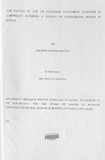| dc.description.abstract | The way lending decisions by commercial banks in Kenya is made remains a mystery to most
borrowers. Banks are known to follow very stringent rules in lending risk appraisal. Financial
statements analysis on the borrower is a key step in lending decisions. Such analysis seeks to
establish the ability and the reliability of the borrower to repay loans. However, every bank may
have its own level of emphasis on the use of the financial statements and also differ in the
aspects emphasized on the same statements. The question as to whether corporate lending
decisions are by and large a product of financial statements was the focus of this study.
A descriptive research design was used in this study and involved a survey of 26 banks in
Nairobi, out of a population of 43 banks currently operating under the Banking Act. A
questionnaire was used as a tool for data collection. The data was analyzed using both
descriptive and inferential statistics. The arithmetic mean and eta were used to interpret data.
Results of analysis were presented in form of statistical tables, charts and frequency tables.
The study established that the income statement is the single most important statement in
lending risk analysis which is supplemented with projected cash flow statement and the balance
sheet and other non-financial information on the client. The study concludes that, a combined
82% of the lending decisions are based on these three financial statements as indicated in the
measure of association, while 18% can be said to go to other factors. The study satisfied the
objectives of the study which focused on establishing the extent of use of financial statements in
lending decisions. Corporate lending decisions can be said to be, at least in part, products of
financial statements analysis.
The study recommends that commercial banks devise a self assessment form with benchmarks
on the key areas of assessments to be codified within a document for clients to read and use it for
self assessment. From such assessment banks can develop categories for customers, based on the
amount it can lend, the security expected and term of the loan. This would serve to minimize on
the time taken in lending risk analysis. | en |

